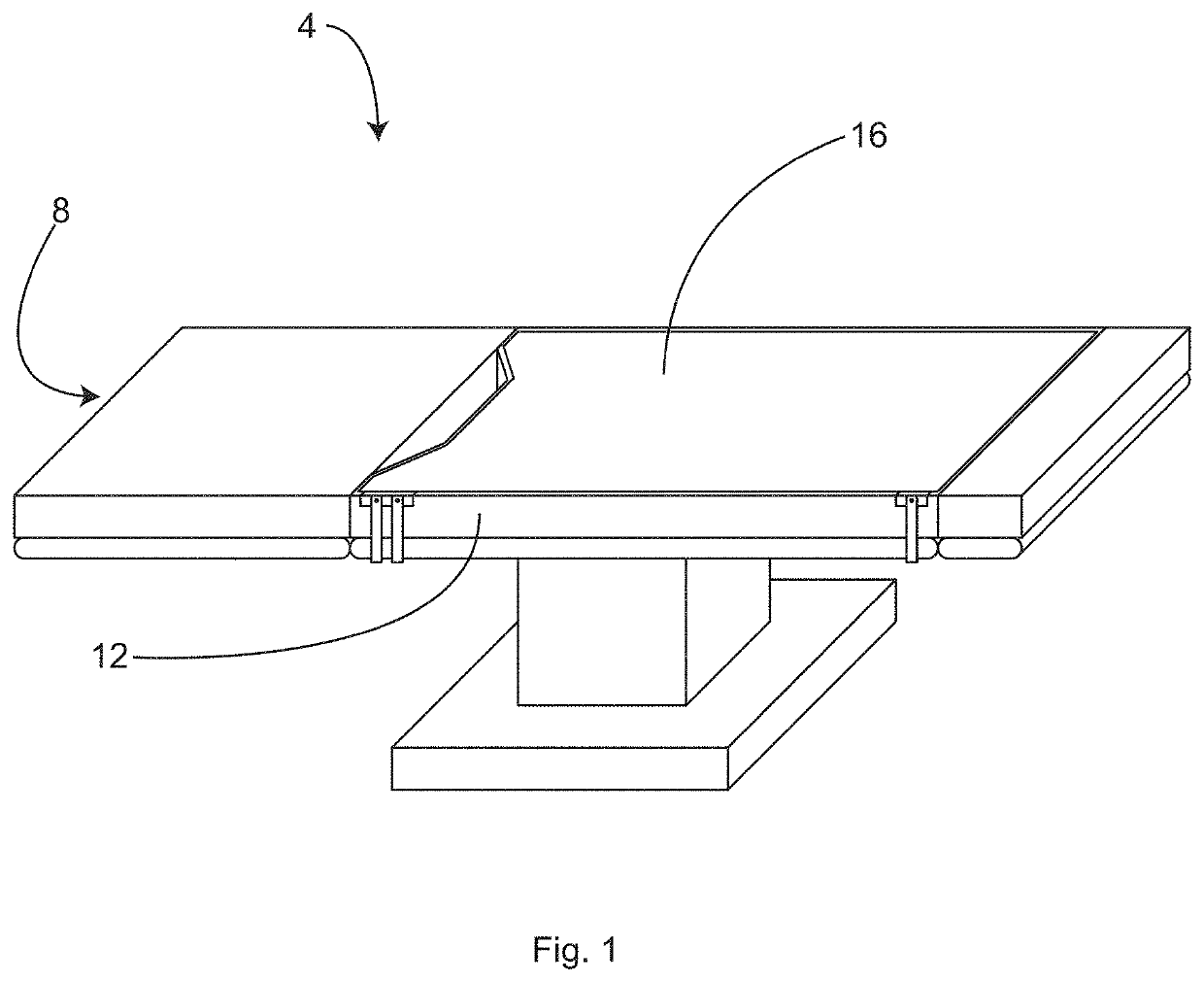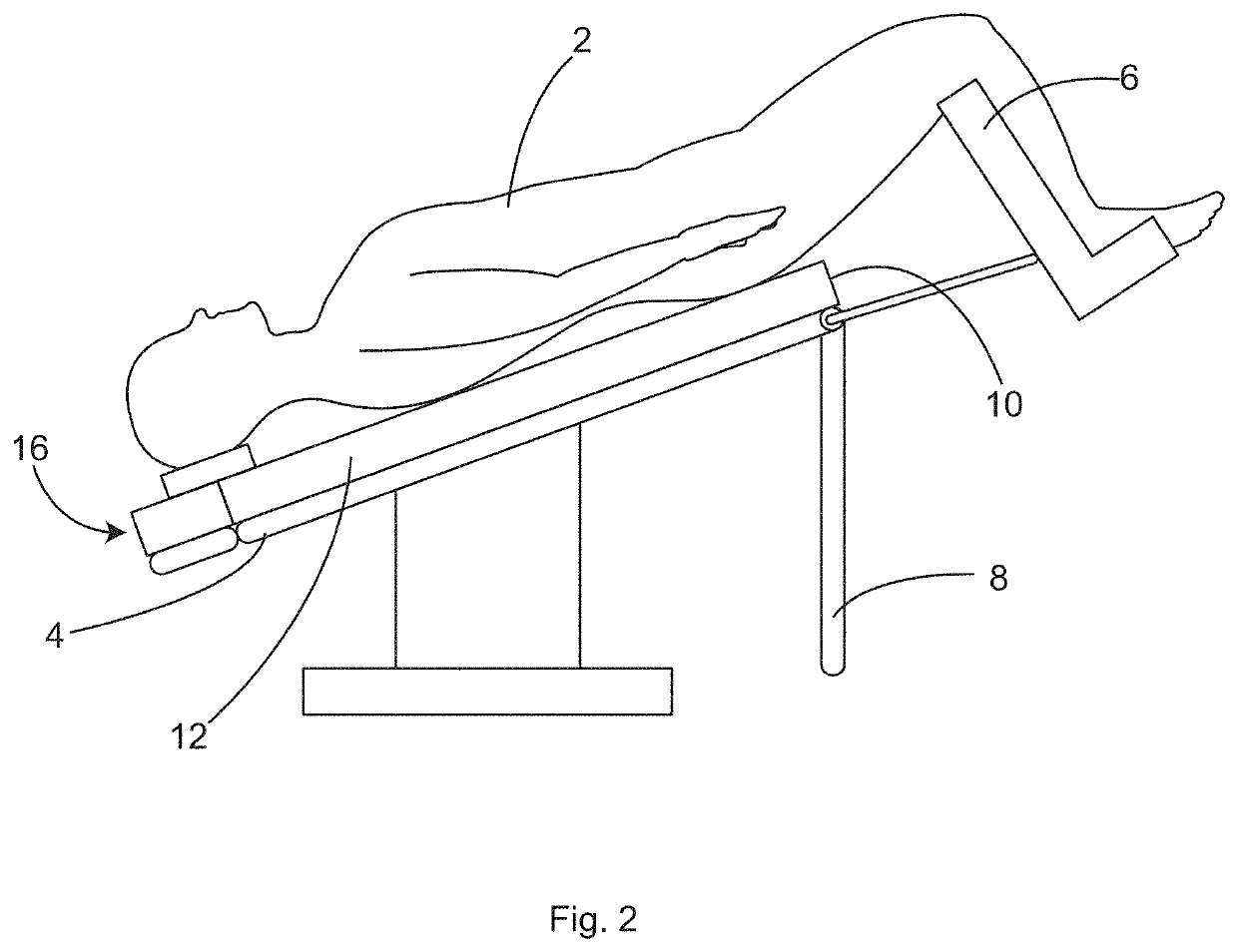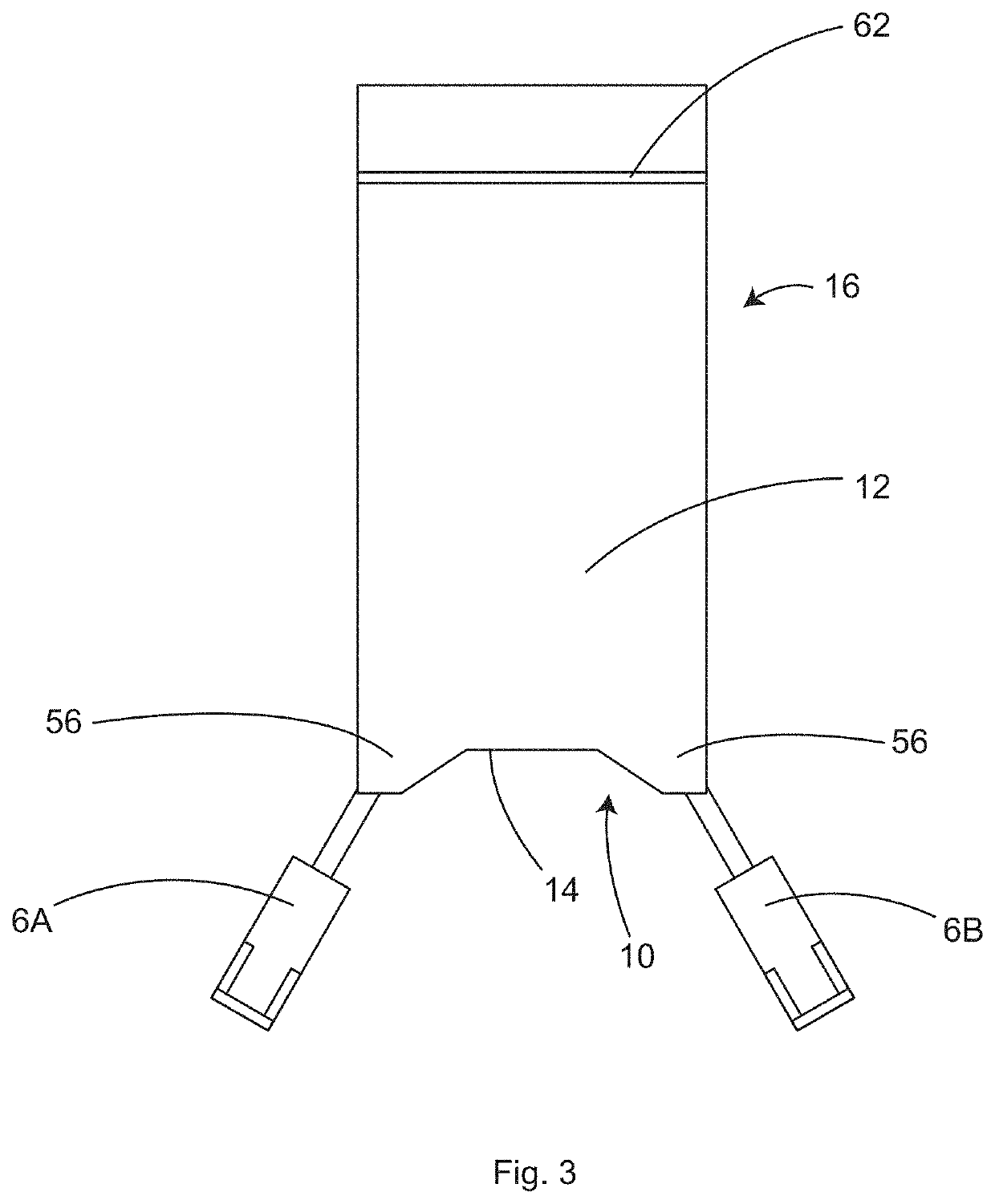Patient Securement System for the Surgical Trendelenburg Position
a securement system and trendelenburg position technology, applied in the direction of restraining devices, surgical equipment, synthetic resin layered products, etc., can solve the problems of patients being at risk of sliding off the head end of the surgical table in the trendelenburg position, the problem of patient safety is at risk, and the patient is at risk of sliding off the surgical tabl
- Summary
- Abstract
- Description
- Claims
- Application Information
AI Technical Summary
Benefits of technology
Problems solved by technology
Method used
Image
Examples
Embodiment Construction
[0059]The following detailed description is exemplary in nature and is not intended to limit the scope, applicability, or configuration of the invention in any way. Rather, the following description provides practical illustrations for implementing various exemplary embodiments. Examples of constructions, materials, dimensions, and manufacturing processes are provided for selected elements, and all other elements employ that which is known to those of skill in the field. Those skilled in the art will recognize that many of the examples provided have suitable alternatives that can be utilized.
[0060]In some embodiments, as shown in FIG. 1, embodiments include underbody supports such as heated underbody supports, including heated mattresses, heated mattress overlays, and heated pads. The term underbody support may be considered to encompass any surface situated below and supporting a user in a generally recumbent position, such as a patient who may be undergoing surgery, including heat...
PUM
| Property | Measurement | Unit |
|---|---|---|
| weight | aaaaa | aaaaa |
| thickness | aaaaa | aaaaa |
| diameter | aaaaa | aaaaa |
Abstract
Description
Claims
Application Information
 Login to View More
Login to View More - R&D
- Intellectual Property
- Life Sciences
- Materials
- Tech Scout
- Unparalleled Data Quality
- Higher Quality Content
- 60% Fewer Hallucinations
Browse by: Latest US Patents, China's latest patents, Technical Efficacy Thesaurus, Application Domain, Technology Topic, Popular Technical Reports.
© 2025 PatSnap. All rights reserved.Legal|Privacy policy|Modern Slavery Act Transparency Statement|Sitemap|About US| Contact US: help@patsnap.com



